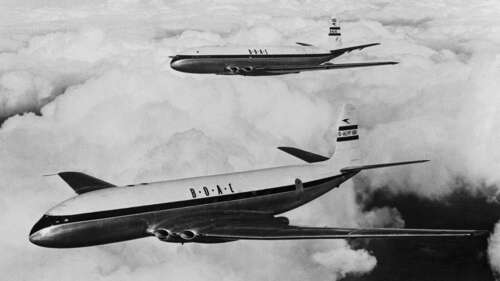
In September 1946, the Comet concept began to be put together. It was almost three full years later that the machine made its maiden flight, but to skip ahead to the end in that way is to discount the journey it went through from concept to completed prototype.
R. E. Bishop, Chief Designer of the new aircraft, described the process in great detail in a piece for Key.Aero. Bishop explained that to build upon the existing airliners of the United States, such as the Douglas DC-6, would be counter to the objectives of the project and result in a model that was outdated before it reached wider use. To avoid that, an aircraft that was all the more original, yet practical and not overly “out there” so as to demand parts that could be temperamental or difficult to acquire, was called for.
“The more we studied the problem the more confident we became that a full-size airliner for about 40 passengers was justifiable,” Bishop wrote. What would form the basis of the design of the aircraft these 40 hypothetical passengers would travel in? The virtues of unusual decisions like dispensing with the aircraft’s tail were discussed, but finally rejected. The 93-foot-long DH 106 Comet that would ultimately fly was sleek and aerodynamic, of course, but the exterior didn’t really depart from the image of a classic airliner. Inside, though, things were rather more interesting.

